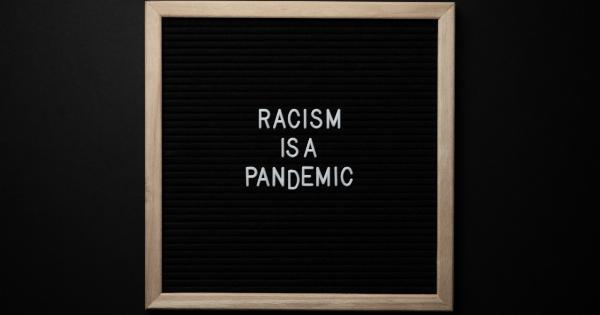Autism Spectrum Disorder (ASD) and Attention Deficit Hyperactivity Disorder (ADHD) are neurodevelopmental disorders that often present significant challenges for both individuals and their families.
These disorders can have a profound impact on family dynamics, affecting various aspects of daily life. Understanding the specific challenges and learning effective strategies to address them is essential for families affected by autism and ADHD.
Financial Strain and Stress
One of the most significant impacts of autism and ADHD on families is the financial strain it can cause. These disorders often require specialized treatments, therapies, and interventions that can be quite costly.
From speech therapy to occupational therapy to medication, the expenses can quickly add up. Moreover, many families may need to modify their homes or purchase assistive devices to accommodate their child’s needs.
The financial strain resulting from autism and ADHD can lead to additional stress within the family. Parents may experience anxiety and worry about how to provide the necessary resources for their child.
It can also create tension within the relationship as partners struggle to manage the financial burden.
Increased Emotional Demands
Raising a child with autism or ADHD can place significant emotional demands on parents and siblings. Children with these disorders often require additional attention and support, which can leave parents feeling overwhelmed and emotionally exhausted.
The constant need for vigilance and supervision can be mentally draining for both parents and siblings.
The emotional demands of caring for a child with autism or ADHD can also impact the overall dynamics between family members. Siblings may feel neglected or resentful due to the amount of attention their sibling with special needs requires.
Additionally, parents may struggle to balance their time and attention between all their children.
Interpersonal Relationships
The impact of autism and ADHD on family dynamics extends beyond the immediate family. These disorders can affect the interpersonal relationships with extended family, friends, and even the community.
Families may experience isolation or strained relationships as others struggle to understand or accommodate the unique challenges faced by individuals with autism or ADHD.
Social outings and gatherings may be difficult for individuals with autism or ADHD, leading to limited participation or avoidance altogether.
This can create tension within relationships and further contribute to feelings of isolation for the entire family.
Increased Stress Levels
Living with autism or ADHD can lead to higher stress levels for everyone in the family. Parents may constantly worry about their child’s well-being, academic progress, and future prospects.
The pressure to advocate for their child’s needs, navigate the educational system, and secure appropriate services can be overwhelming.
Children with autism or ADHD may also experience increased stress levels due to challenges related to social interactions, academic performance, and sensory sensitivities.
These stressors can further impact their behavior and ability to cope with daily life, putting additional strain on the family unit.
Communication Difficulties
Individuals with autism or ADHD often struggle with communication difficulties, which can disrupt family dynamics.
Limited verbal or nonverbal communication skills can make it challenging for family members to understand and meet the individual’s needs. This can lead to frustration, misunderstandings, and increased conflict within the family.
Parents may need to develop alternative communication strategies to effectively connect with their child. This may involve the use of visual schedules, augmentative and alternative communication (AAC) systems, or social stories.
Taking the time to understand and support a child’s unique communication style can help alleviate some of the communication difficulties within the family.
Parenting Challenges
Raising a child with autism or ADHD presents unique parenting challenges. The strategies and approaches that work for neurotypical children may not be effective for individuals with these disorders.
Parents often need to seek specialized training and education to develop appropriate parenting techniques.
The additional time and effort required to manage the needs of a child with autism or ADHD can leave parents feeling overwhelmed and emotionally drained.
This can strain their relationship with their partner and impact their ability to balance work, self-care, and the needs of their other children.
Impact on Siblings
Siblings of children with autism or ADHD can also be significantly impacted by the dynamics within the family. They may feel a range of emotions, including frustration, jealousy, guilt, and loneliness.
Their parents’ attention may be predominantly focused on their sibling with special needs, leaving them feeling neglected or misunderstood.
Siblings may also face challenges in social settings as they navigate the stigma and misconceptions associated with autism and ADHD.
They may worry about their sibling’s well-being, experience embarrassment, or struggle to explain their sibling’s behaviors to their peers.
Support and Coping Strategies
While autism and ADHD can undoubtedly have a profound impact on family dynamics, proactive support and coping strategies can help mitigate some of these challenges.
Seeking professional guidance and connecting with other families facing similar situations can provide valuable insights and emotional support.
Education and understanding play a crucial role in improving family dynamics. Learning about the individual’s diagnosis, strengths, and challenges can help parents and siblings develop empathy and effective communication strategies.
Implementing consistent routines, establishing clear expectations, and fostering a supportive environment can also contribute to a healthier family dynamic.
Conclusion
The impact of autism and ADHD on family dynamics is significant and multifaceted.
Financial strain, increased emotional demands, interpersonal relationship challenges, heightened stress levels, communication difficulties, parenting challenges, and the impact on siblings all contribute to the complexity of living with these disorders.
However, with proper support, understanding, and coping strategies, families can navigate these challenges and create a nurturing environment for everyone involved.
By promoting empathy, fostering open communication, and seeking appropriate resources, families affected by autism and ADHD can thrive amidst the unique dynamics these disorders present.






























